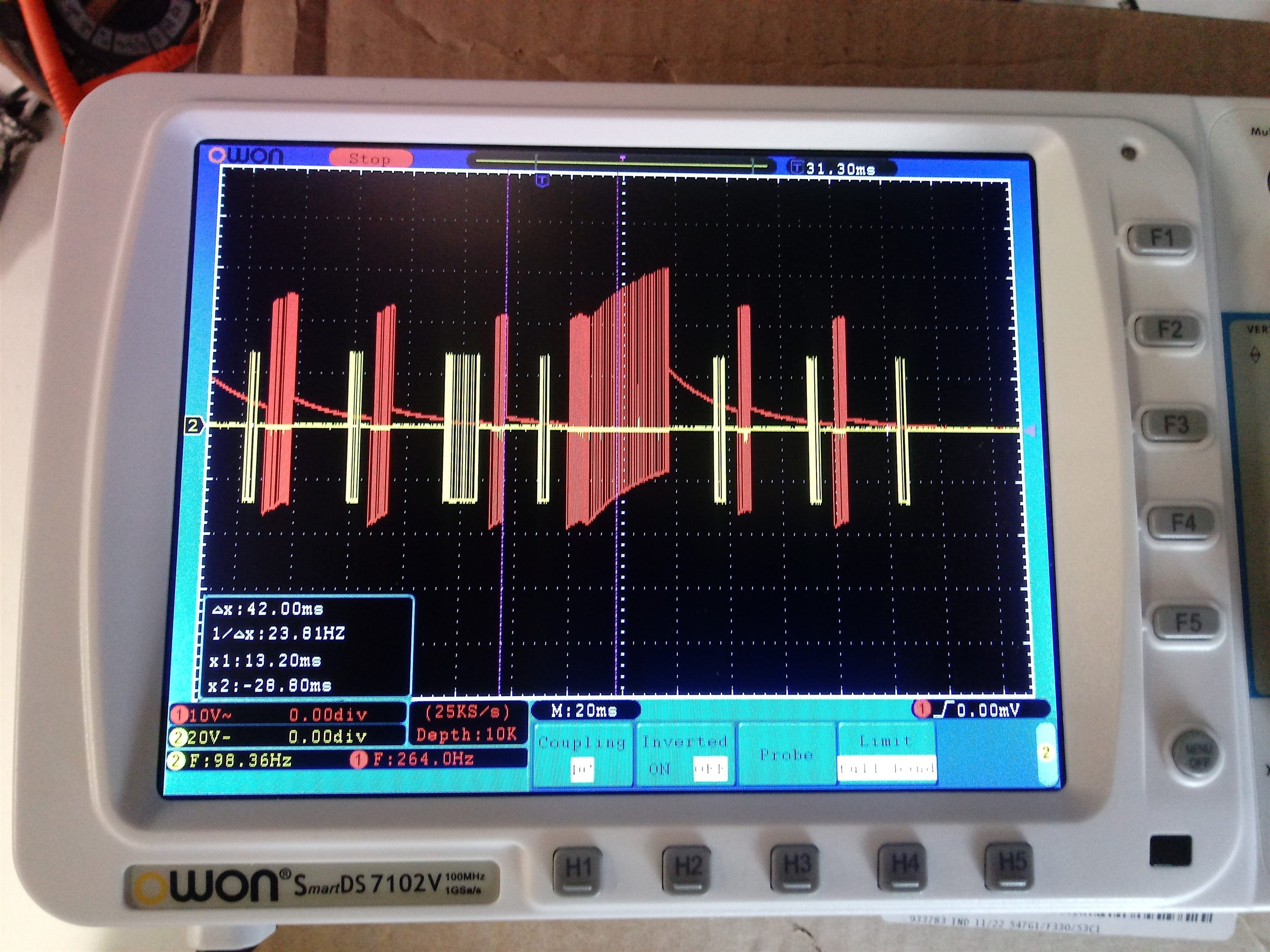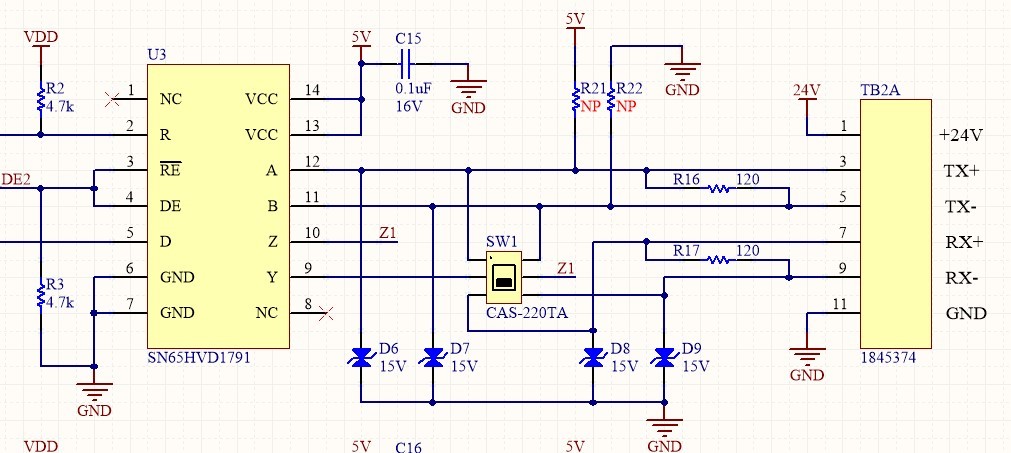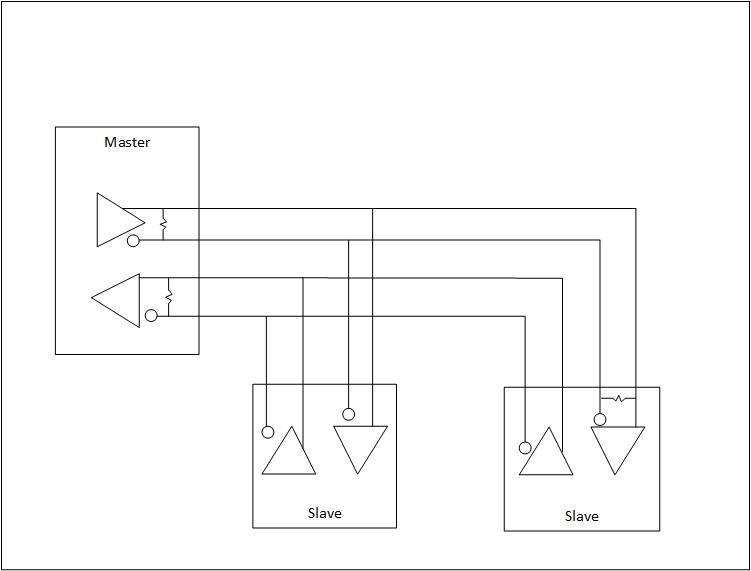Having an issue with the output of the SN65HVD1791 steadily climbs to a higher reference voltage as pulses are being sent to the slave device. Reference voltage ramps back down to 0V when pulses stop. This is represented by the red signal below. The yellow signal is the recive data from the slave device. I've tried using a pull up resistor (1k) on TX+, and pull down resistor (1k) on TX-.
-
Ask a related question
What is a related question?A related question is a question created from another question. When the related question is created, it will be automatically linked to the original question.




